Initial release date 1981 Genre Shoot 'em up | ||
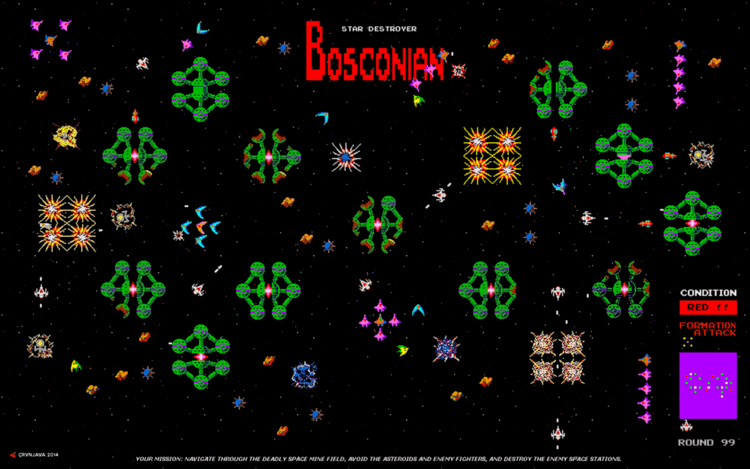 | ||
Composer(s) Nobuyuki Ohnagi (Arcade ver.)Yuzo Koshiro (X68000 ver.) Release date(s) November 1981ArcadeJP: November 1981NA: 1981MSXJP: July 14, 1984Sharp X68000JP: December 1988 Mode(s) 1-2 players alternating Cabinet Upright, cabaret, and cocktail CPU 3x ZiLOG Z80 @ 3.072 MHz Similar Namco games, Shooter games | ||
Arcade game bosconian star destroyer 1981 namco
Bosconian (ボスコニアン, Bosukonian) is a multi-directional scrolling shooter arcade game which was developed and released by Namco in Japan in 1981. In North America, it was manufactured and distributed by Midway Games.
Contents
- Arcade game bosconian star destroyer 1981 namco
- Classic game room bosconian arcade video game review
- Gameplay
- Reception
- Legacy
- Clones
- References
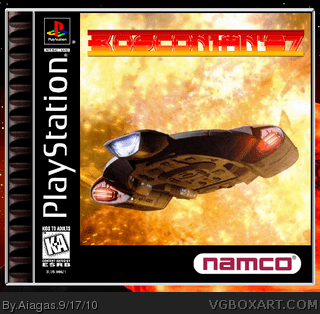
Bosconian allows the player's ship to freely roam across open space which scrolls in all directions. The game also has a radar, which tracks the position of the player's ship, the formation attacks, and the space stations.
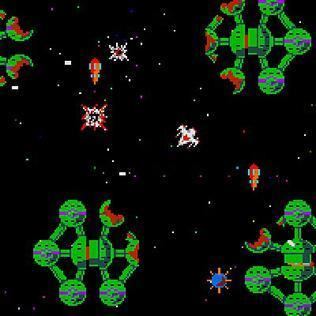
It uses Namco Galaga hardware, but with a video system like that used in Rally-X.
Classic game room bosconian arcade video game review
Gameplay
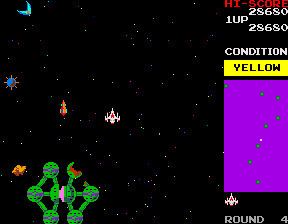
The object of Bosconian is to score as many points as possible by destroying enemy missiles and bases. The player controls a small fighter ship that can move in eight directions, and can fire both forward and backward. Each round consists of a number of green enemy bases that must all be destroyed to advance to the next round (a semi-transparent automap helps identify their location). Each station consists of six cannons arranged in a hexagon, surrounding a central core. The player must either destroy all six cannons or shoot the core to destroy a station, and in later rounds the core is capable of defending itself (opening and closing while launching missiles).
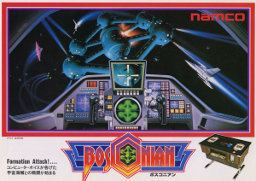
Additionally, the player must avoid or destroy stationary asteroids, mines, and a variety of enemy missiles and ships which attempt to collide with his or her ship. Enemy bases will also occasionally launch formation attacks — destroying the leader causes all remaining enemies to disperse, but destroying all enemies in a formation scores extra bonus points. A spy ship (worth a random bonus value) will also appear occasionally, which must be destroyed or the round will go to "condition red" regardless of how long the player has taken.
Throughout the game, a digitized voice alerts the player to various events:
Bosconian does not have a definite ending, and will continue until the player has lost all of his or her lives. Similar to Galaga, Bosconian rolls over from Round 255 to Round 0, causing the game to behave abnormally during this round. If the player can successfully complete Round 0, the game continues to Round 1, as though the player started a new game.
Reception
Bosconian won the 1982 Arcade Award for Best Science Fiction/Fantasy Coin-Op Game in January 1983, beating both Atari's Gravitar and Sega's popular Zaxxon.
Legacy
Bosconian was ported to the Sharp X68000, MSX, and Commodore 64, and later appeared in several of Namco's Namco Museum compilations for PlayStation and other consoles. The game has also been released in Jakks Pacific's TV game controllers, and was released as part of the Pac-Man's Arcade Party arcade machine in 2010. A home computer sequel, Bosconian '87, was released in 1987 for the Amstrad CPC, Commodore 64, and ZX Spectrum. An arcade sequel of sorts called Blast Off was released in 1989 (but only in Japan), a vertical scrolling shooter which had more in common gameplay-wise with Namco's own Dragon Spirit than with Bosconian. This was especially noticeable in the third area of each world, when the player's ship would increase in size.
The free-roaming shooter that scrolls in all directions concept would later be used in other games, including Konami's Time Pilot and Williams Electronics' Sinistar (both 1982).
Bosconian was the first game to feature a continuation screen and timer after the end of a game, giving a player who had just lost his or her last life a certain number of seconds to insert more coins and press START in order to continue the game from the start of the same round. This feature could be disabled entirely for arcade owners who did not want it, by changing a DIP switch setting. However, there is some debate over whether Bosconian or Tempest should be credited as the first arcade game to introduce the concept of continuing: Tempest is the older of the two games, but it did not feature a continuation screen and timer. Instead, it gave the player a choice of starting from any odd-numbered level at the beginning of the game, up to the highest odd-numbered level that had currently been unlocked on the machine.
